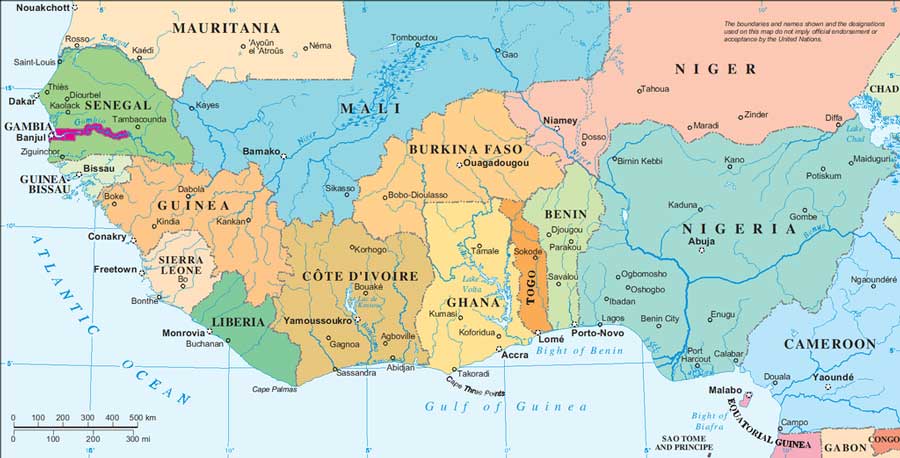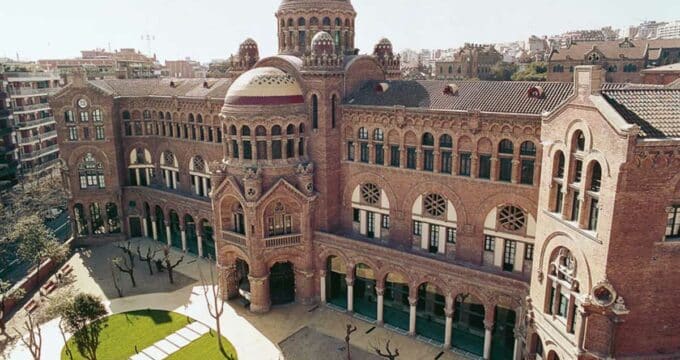Drivers of study abroad in Côte d’Ivoire, Cameroon, and Senegal
- Côte d’Ivoire, Senegal, and Cameroon are widely thought of as three of the most interesting emerging source countries of international students
- We look at the market fundamentals driving outbound mobility from these three West African nations
Last week, we looked at market fundamentals (e.g., GDP, size of the middle class, size of the youth demographic, economic trends) in Bangladesh, Indonesia, Nepal, and Vietnam.
Today, we’ll use the same lens to look at Cameroon, Côte d’Ivoire, and Senegal. All three countries feature strong demand for study abroad, primarily for French-language instruction but with significant segments willing to study in English or another language.

Côte d’Ivoire
Côte d’Ivoire has been on a positive economic performance trajectory. The World Bank summarises:
“Côte d'Ivoire's economic growth is solid and remarkably resilient in the face of global shocks … growth is expected to reach 6.2% in 2025 and 6.4% on average through 2027, driven by hydrocarbons, services, and private investment sectors.”
Another market fundamental is extremely strong. UNICEF notes: “By 2050, Côte d’Ivoire will be the country with the tenth highest proportion of people under 18 years of age.”
ISS Futures says: “Côte d'Ivoire has the third-largest economy in ECOWAS at US$72.4 billion and has experienced average annual growth of 8% since 2010, making it one of the fastest-growing economies in Africa.”
- GDP growth projection: 6.1%% in 2024 (World Bank).
- Population: 38.2 million.
- Median age: 18. Over 50% of the population is under the age of 25.
- Main cities: Abidjan, Bouaké, Daloa, San Pedro, and capital city Yamoussoukro.
- Proportion of population in poverty: 39%. Middle-class estimates are not available.
- Currency performance: The CFA franc appreciated by just over 6% against the US dollar from 2024 to 2025.
- Inflation rate: Only 0.3% (as of mid-2025).
- Youth unemployment: The official stat is that under 4% of Ivorians aged 15–24 are unemployed. But the Mastercard Foundation estimates that 60-65% are not employed in the formal economy.
- Outbound mobility trends: About 16,000. The main destinations are France (by far, with close to 11,000), Belgium, Canada, Morocco, UK, US, India, China, and Russia.
- English-language proficiency: “Very low”
Outlook: Côte d’Ivoire is an increasingly important emerging market due to its strengthening economy, shrinking poverty rate, low inflation, and currency performance. Lack of jobs and quality higher education are drivers of outbound mobility. Despite Côte d'Ivoire’s improving economic performance, youth unemployment is considered by many to be the country’s most pressing issue. Most students speak French as their first language, but there is also demand for English-language studies and the UK, for one, is actively recruiting in Côte d’Ivoire.
Senegal
Senegal is another high achiever in terms of recent economic performance in Africa. The country – one of the most stable and secure in the region – surpassed its 2024 GDP growth mark (6.1%) to reach 7.9% in 2025.
The IMF gives a fairly glowing review of the situation this year:
“The authorities deserve recognition for their continued commitment to transparency, fiscal discipline, and sound macroeconomic management. Despite global uncertainty and tighter financing conditions, Senegal’s economy remains robust in 2025, supported by the first full year of oil and gas production and a rebound in agriculture. Real GDP growth is projected at about 7.9 percent this year, with non-hydrocarbon growth around 3.4 percent, while inflation is expected to average about 1.4 percent.
Fiscal performance through end-September has been broadly in line with the revised 2025 budget, with revenues on target and non-priority spending contained. The overall deficit is projected to narrow sharply from 13.4 percent of GDP in 2024 to 7.8 percent in 2025, reflecting the authorities’ strong commitment to consolidation.”
Senegal is a Francophone nation, but the government is trying to increase English-language proficiency in order to allow Senegal and its people to participate more fully in the global economy. English is now being introduced in nursery schools as part of this aim.
- GDP growth projection: 7.9% (IMF)
- Population: 18.9 million. Senegal is among the 20 fastest growing populations in the world.
- Median age: 19.5. Over 60% of the population is under the age of 25.
- Main cities: Dakar, Touba, and Thiès.
- Proportion of population in the middle class: Official stats are not available but especially in Dakar, the middle-class is expanding.
- Currency performance: The CFA franc appreciated by just over 6% against the US dollar from 2024 to 2025.
- Inflation rate: 1.9% in October.
- Youth unemployment: The official stat is that 4.4% of Senegalese aged 15–24 are unemployed, but the Mastercard Foundation estimates the real rate of Senegalese youth not employed in the formal economy is above 60%.
- Outbound mobility trends: Over 20,000, with the main destinations being France (over 16,000), Morocco, and Canada.
- English-language proficiency: “Very low”
Outlook: Senegal’s economic performance, stability, global-mindedness, and fast-growing population make this country a very interesting emerging market.
Cameroon
The International Monetary Fund (IMF) downgraded economic growth in Cameroon in 2025 to reach 3.8%, noting that tighter financing conditions are part of the downgraded estimate. At the same time the IMF noted that Cameroon has “made substantial progress on its climate policy framework and enhanced readiness for climate adaptation and mitigation.”
Focus Economics notes:
“Cameroon has one of Central Africa’s largest economies, benefiting from a mix of oil production, agriculture, and manufacturing. The country is a key exporter of crude oil, cocoa, coffee, and timber. However, economic growth has been constrained by weak governance, infrastructure bottlenecks, and ongoing security challenges in the Anglophone regions, where separatist conflicts have disrupted business activity.”
The IMF and other external lenders have been working with and funding the Cameroonian government to strengthen the country’s economic resilience. Exports make up only about 15% of total GDP, which is low by global standards, bracing the country somewhat from external shocks. But because oil and petroleum make up over half of export earnings, the economy remains vulnerable. Cameroon’s oil revenues shrunk by 13% this year.
Demand is strong from Cameroon given insufficient state funding of education (13% of total budget), lack of high-quality educational options (especially for English-language Cameroonians), and low availability of jobs in the formal economy.
- GDP growth projection: 3.8% in 2025 (IMF).
- Population: 30 million.
- Median age: 18. Over 60% of the population is under the age of 25.
- Main cities: Douala and Yaoundé.
- Proportion of population in poverty: 30%. Middle-class estimates are not available.
- Currency performance: Between October 2024 and October 2025, the CFA franc BEAC appreciated by 6% relative to the US dollar and in the past 12 months, it rose by 9%.
- Inflation rate: 3.3% (as of mid-2025), a decrease from 7.4% in 2023 and the lowest rate since 2021.
- Youth unemployment: 6.2% of those aged 15–24 are out of work in the formal economy. But the informal economy is where 90% of Cameroonians work, indicating challenges for youth to obtain stable jobs.
- Outbound mobility trends: About 30,000. Cameroon is the second largest African sender of students abroad after Nigeria. The main destinations are France, Canada, Germany, China, Morocco, Tunisia, South Africa.
- English-language proficiency: “Very low”
Outlook: Cameroon has a relatively small population but a high proportion of youth. Study abroad drivers for 2026 will be low inflation, currency strengthening, and demand for high quality education and jobs. There is demand for both English and French studies, since Cameroon is a bilingual country.
For more information, please see:
















